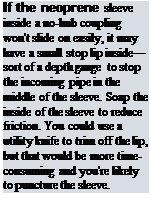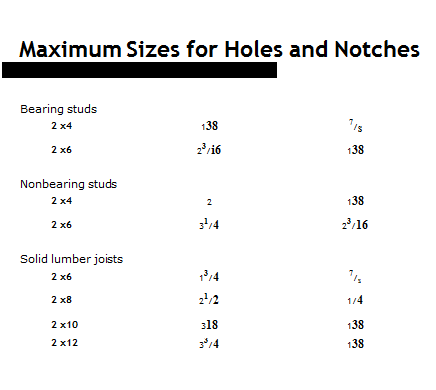BUILDING OUT FROM THE MAIN DRAIN
Extending the DWV system out from the end of a cast-iron main drain—where it joins the soil stack—can be the least disruptive way if there’s a cleanout at the end of the drain that you can remove. Before cutting the drain, support both sides of the section to be cut, using pipe clamps or strap hangers.
The exact configuration of the end run will depend on the size of the main drain, the fitting currently at the base of the stack, the fixtures you’re adding, and the size of the drain needed to serve them. If you are not adding a toilet, the drain extension can be 2-in. pipe, which can be attached with a reducing bushing such as the male-threaded adapters shown in "Extending with 2-in. ABS,” at left. If you’re adding a toilet, however, the extension must be 3-in. pipe, often inserted with a ribbed bushing to ensure a tight fit. If it’s not possible to insert the 3-in. pipe into an old cleanout leg, you may need to cut out the existing combo and install a no-hub combo to build out from.
Note: If you build out from an existing cleanout at the end of the main drain, you’ll need to add a new cleanout at the end of the extension.
TYING INTO THE MAIN DRAIN IN MID-RUN
Before tying into the main drain in mid-run, flush the drain and support both sides of the section you’ll cut into. Then install strap hangers to support both sides of the 3-in. or 4-in. drain. Tying into a cast-iron or plastic drain is essentially the same procedure as splicing into a stack, but it requires different fittings. So here’s how to tie into a cast-iron main drain. With one hand,

![]()

hold the no-hub combo fitting you’ll add next to the drain section and, with the other hand, mark cut-lines onto the drain using a grease pencil.
The cut marks should be 1 in. longer than the length of the fitting to accommodate the thickness of the stop lip inside each no-hub coupling’s neoprene sleeve. (If the main drain is cast iron, use a snap cutter to cut it; if it’s plastic, use a wheeled cutter.)
After cutting out the drain section, use no-hub couplings to attach the new no-hub combo fitting. Slide a neoprene sleeve onto each end of the cut drain, insert the no-hub combo, and then slide






Leave a reply